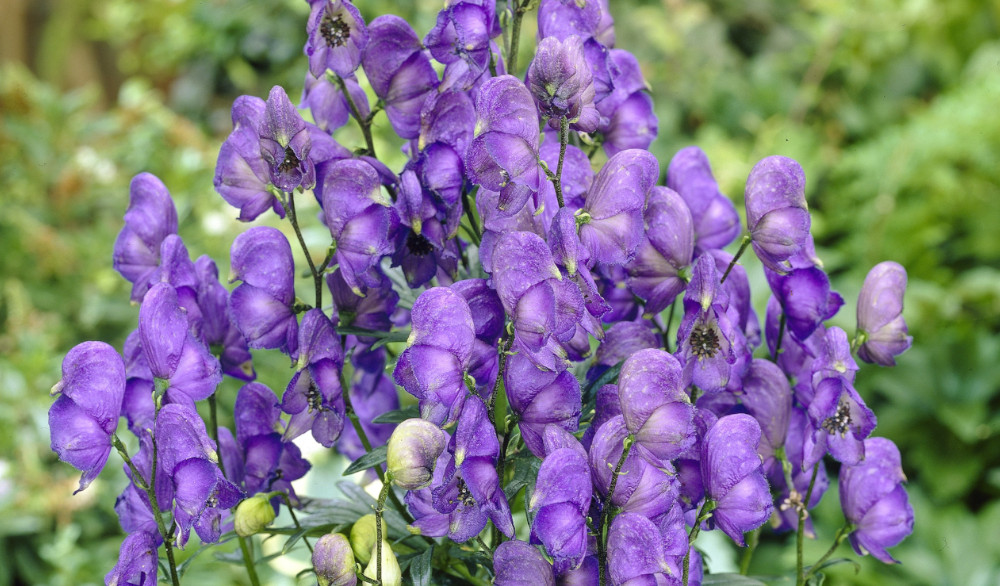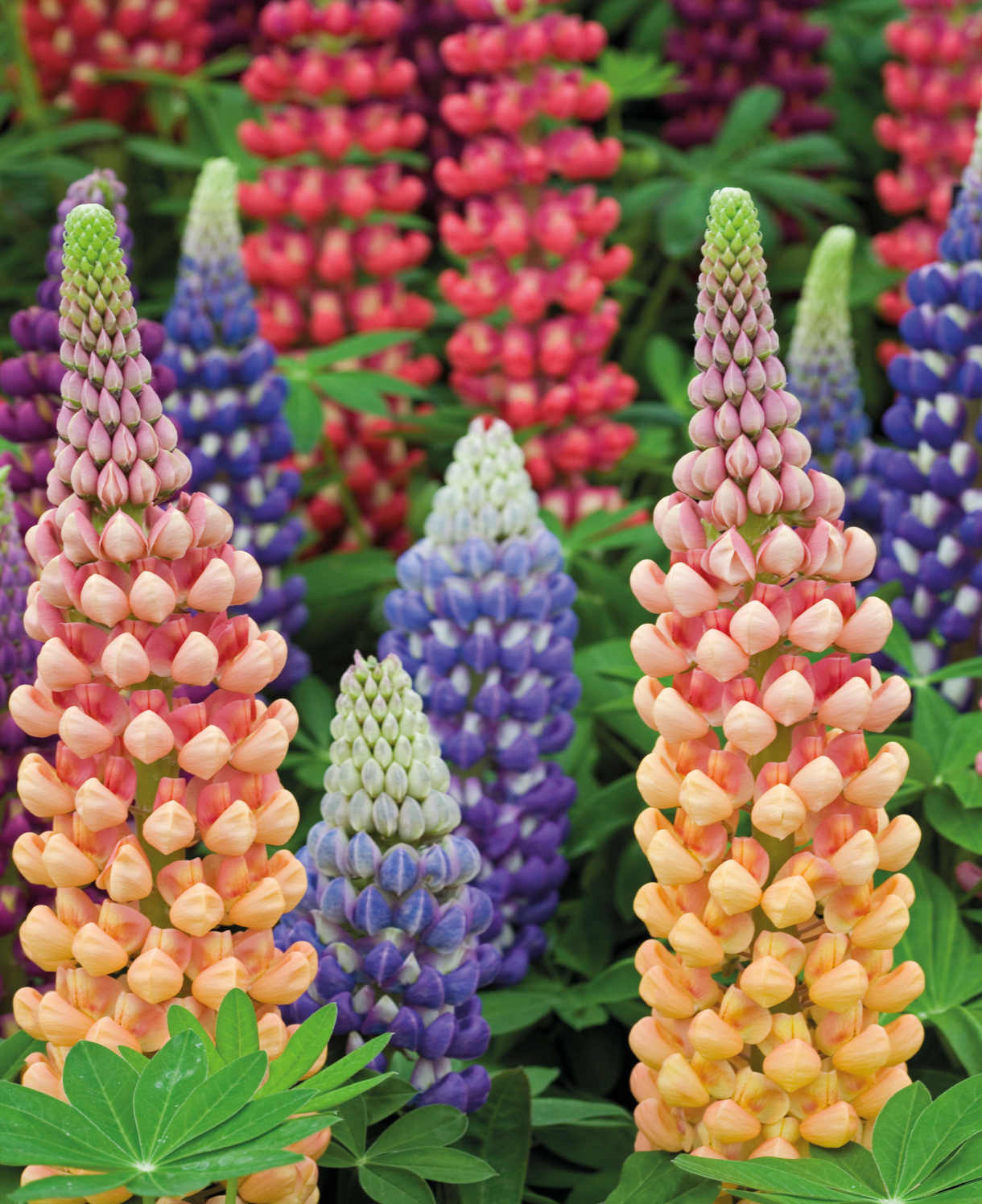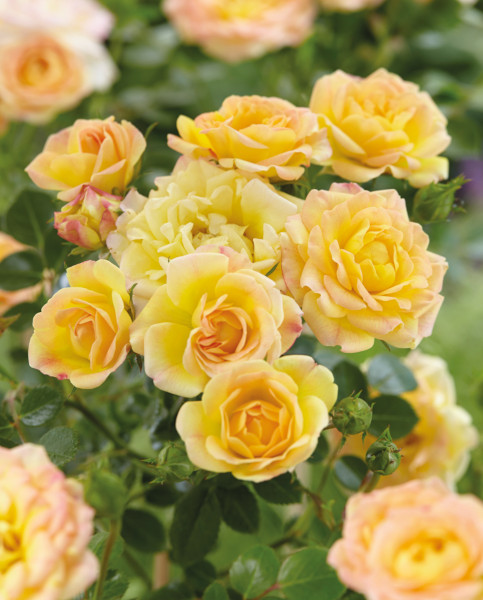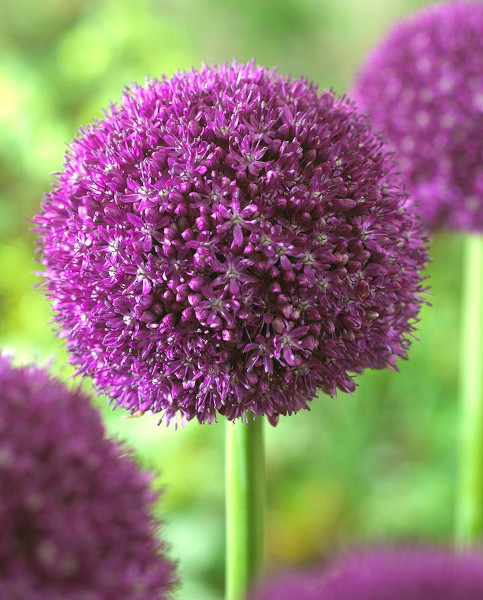How to grow Aconitum
Originating mainly from mountainous grassland or scrub throughout the northern hemisphere, aconitum are hardy perennials with dense, attractive spires of sculptural, hooded, blue or yellow flowers. The ‘hoods’ are in fact the upper sepal of each flower, providing the inspiration for the common name ‘monkshood’ (given their resemblance to the cowls worn by medieval monks). Another common name is ‘wolfsbane’, a nod to the highly poisonous nature of the plant. According to historians, Saxons would dip their arrowheads into the juice of aconitum roots before hunting wolves.
Handled with care, aconitum can make a beautiful addition to the garden and flowers are extremely attractive to pollinating insects, particularly bees. Useful in borders, aconitum contributes masses of vivid colour while taking up little ground space. It also makes a great addition to a wildflower meadow.
All parts of the plant contain poison, though the highest concentration is found in the roots. Wear gloves and protective clothing when handling and avoid ingesting at all costs!

Key Information
Soil pH
Position
Hardiness


Where & when to plant Aconitum
For best results, plant in autumn or spring. An autumn planting is suitable for those gardening in ‘mild’ conditions. (Broadly speaking, this is the southern half of the UK). For those liable to very cold winters or waterlogged ground, it is best to wait until spring. (This is generally the northern half of the UK, or anyone gardening on heavy, clay soil).
Planting can be done at other times throughout the year providing a watchful approach to watering is taken until plants are established.
Aconitum is happiest in cool, moist, fertile soil in partial shade. Full sun will be tolerated in cooler locations (ie. coastal or mountainous regions) and if soil is kept moist.
How to plant Aconitum
Clear the area of weeds
Dig an extra deep planting hole and add well-rotted organic matter (to increase moisture retention during drier months)
Place the plant in the hole
Backfill with soil and gently firm in with foot
Soak well with water
Mulch around the base with well-rotted organic matter
Continue to water well until fully established. Aconitum can be slow to settle when newly planted, so be prepared for this to take some time.

What to plant with Aconitum
Aconitum is very much at home in the informal jostle of a cottage-garden-style planting scheme. Mingle with lavatera, allium, persicaria, lupins and roses to achieve the effect.
If you would like any further planting ideas or growing advice for your aconitum, please contact our friendly and knowledgeable Customer Care Team - who will be more than happy to help you.



How to care for Aconitum
Pruning and Deadheading
*Always wear gloves and protective clothing when handling aconitum*
Cut the plant back to just above ground level each autumn. Try to avoid leaving this until spring as aconitum comes into growth very early, therefore cutting back in this season risks damaging new shoots.
Deadhead spent flowers throughout the flowering season to encourage more blooms. Alternatively leave on plant to develop attractive seed heads.
Divide plants every few years to maintain health and vigour (see instructions in ‘How to Propagate Aconitum’ section below).
Watering
Water this moisture-loving plant well until established, then in very dry periods as required.
Cold Protection
All aconitum are fully hardy, requiring no cold protection.
Pests and Diseases
Aconitum is largely trouble free, though can occasionally succumb to root rot and aphid infestation.
Root rot can be caused by plants sitting in waterlogged soil (there is a fine line between giving these moisture loving plants enough water, and too much!). Signs will be stunted growth and wilted, discoloured leaves. If root rot is suspected, lift the plant, cut away any black, rotten root material, incorporate additional drainage (grit or sand) into the planting hole, and replant, having cut back much of the top growth. If possible, combine this process with autumn lifting and dividing, in order to minimise stress to plants.
Aphids are small, sap-sucking bugs which form colonies on leaves and soft stems. An essential part of the wider food chain, aphids should be tolerated if possible. However, if present in numbers so substantial they distort growth, reduce vigour, and encourage the formation of sooty mould, you may wish to remove by organic means. This can be as simple as wiping off and squashing by hand, or regularly blasting off the plant using a jet of water from a hose.
How to propagate Aconitum
The quickest and easiest approach to propagating aconitum is to lift and divide established clumps in autumn (every three to four years is ideal). As well as providing new plants, this is also an essential part of maintaining the health and vigour of existing specimens.
- Choose a day when the soil is not frozen or waterlogged
- Dig the plant out of the ground
- Shake off any excess soil
- Separate the plant into sections using either swift, cutting blows with a sharp spade, or two forks inserted back-to-back with tines touching, handles then pushed together to prise the plant apart
- Discard old, damaged or surplus pieces, keeping healthy, vigorous material
- Replant or pot up selected pieces as required
- Water well until fully established
Common Aconitum Questions
Do I need to stake my aconitum?
Taller species such as A. carmichaelii may need staking, though most will not require this unless grown in deep shade (where they have a propensity to become leggy).
Is it safe to plant aconitum in a family garden?
We advise against allowing very young children to encounter this highly poisonous plant.
Is aconitum poisonous to dogs and cats, as well as humans?
Yes, it is, as well as to horses and livestock. If your pet is prone to having an inquisitive nibble on plants in the garden, this is one best avoided.




